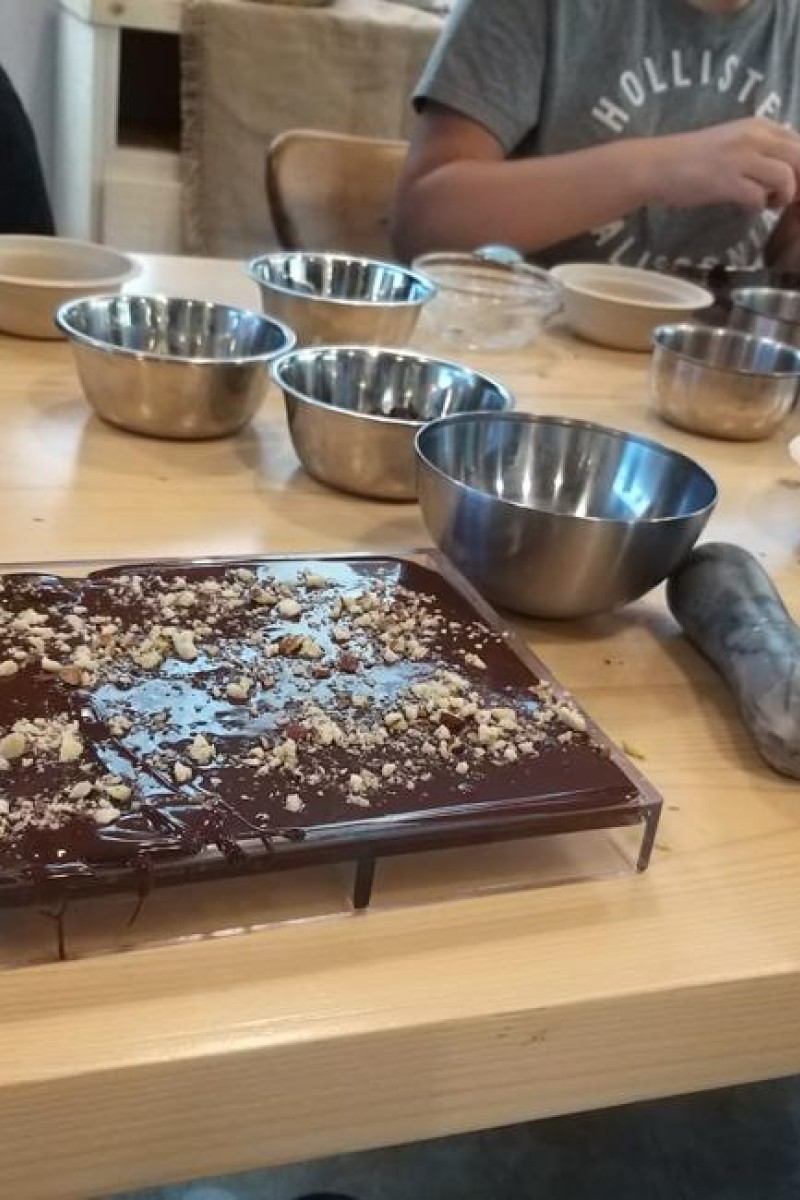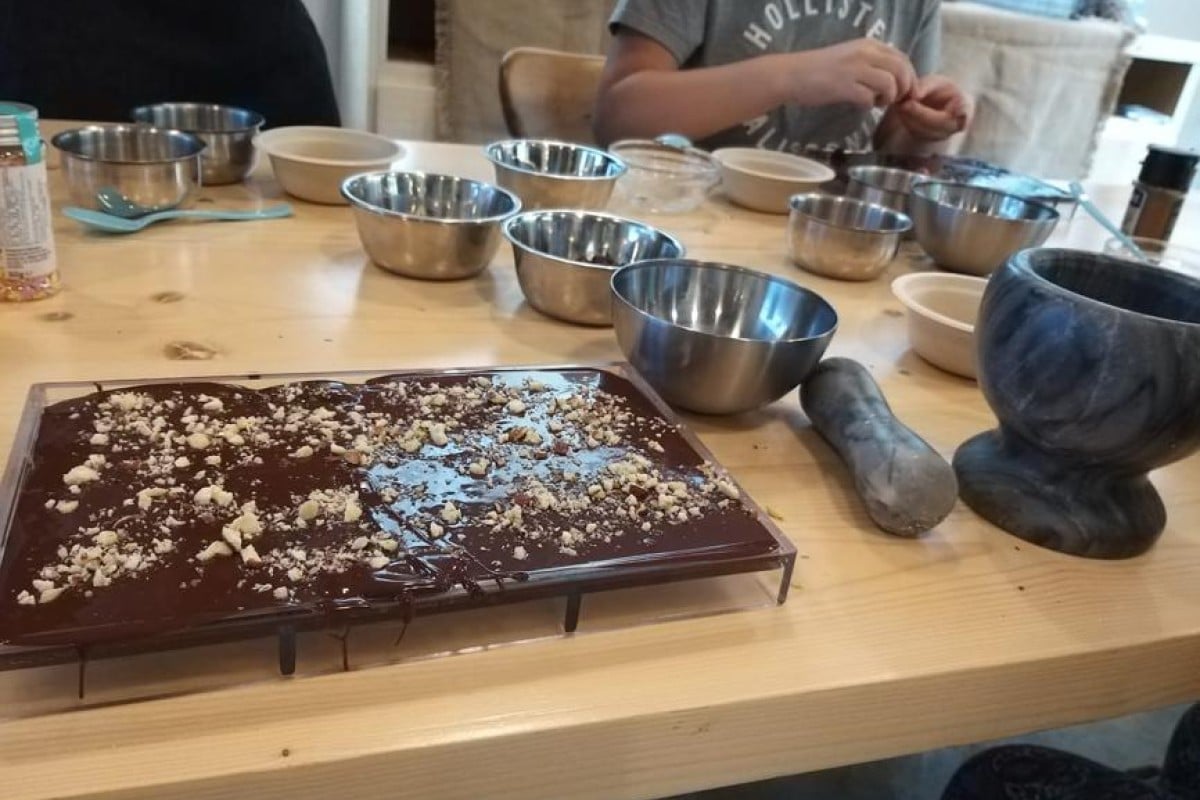
What is bean-to-bar chocolate and how is it made? One junior reporter learns from a Hong Kong-based company
Transforming a humble cacao bean into the tasty chocolate we know and love takes work – and a bit of magic

 YP’s Junior reporters have a go at customising their own slabs of chocolate with a variety of toppings.
YP’s Junior reporters have a go at customising their own slabs of chocolate with a variety of toppings. Peruse the confectionary aisles at the supermarket nowadays, and you might find that many of the artisanal, or handmade, chocolates on sale come in packages labelled “bean-to-bar”. Chocolatiers refer to this as a sign of quality. But what exactly does this term mean?
Bean-to-bar shows that a brand controls every stage of the chocolate-making process, from roasting to moulding. One company that produces bean-to-bar chocolate in Hong Kong is Conspiracy Chocolate, run by Celine Herren and Amit Oz, a Swiss and Israeli couple with a passion for creating unique home-made treats.
Young Post took part in one of their bean-to-bar workshops to learn about the process they go through to make their craft chocolate.
Junior Reporters learn about the history of chocolate
We started with the core ingredient needed to make chocolate: cacao beans. Despite forming the basis of our favourite sweet treat, cacao beans are naturally very bitter. So before being sent to chocolatiers, the beans are fermented and dried to bring out their chocolatey flavour.
Once they are in the hands of chocolatiers like Amit and Celine, the beans need to be roasted and removed from their shells. This is another key step in bringing out their rich flavour. We sampled some of the unroasted beans and found that they tasted nothing like chocolate. But after the roasting and cracking process, we were able to detect that familiar warm chocolate taste.
The next stage involves conching (mixing) and tempering (heating and cooling) the chocolate. The conching process is very technical, as well as time-consuming. It can take several hours to combine all the ingredients and bring out their flavour.
Tempering, meanwhile, is what gives chocolate its smooth texture and sheen. And as Amit explained, tempering chocolate also prevents it from melting in your hand before it reaches your mouth.
Once we had seen how chocolate is made, we had the opportunity to customise our own slabs of chocolate with a variety of fruits, nuts and spices, including dried cranberries, rose petals, and even Sichuan pepper, which is one of Conspiracy Chocolate’s signature flavours.
We had a lot of fun creating weird and wonderful combinations! Once our chocolates were ready, we packaged them in bags that we decorated ourselves, ready to take home.
Conspiracy Chocolate was born out of a desire to recreate the same types of chocolate Amit and Celine had enjoyed back home here in Hong Kong.
“We are both really into cooking and finding interesting flavour pairings,” Amit told us. “So we started experimenting by melting chocolate and adding spices like chilli and rosemary.”
The couple’s efforts proved such a hit with friends and family that decided to keep going. “It’s a passion that got out of hand,” joked Amit.
Five foods to boost your health and make you happy
Starting a new business is daunting, but Amit and Celine did as much as they could prepare themselves. “We took a bean-to-bar course in Switzerland and did lots of research on the internet, and talked to other makers.”
They also took the time to source all their ingredients ethically, choosing a small family farm in Vietnam to supply their beans. Their favourite part of the process is the same it has always been: trying out different ingredients to come up with interesting new products.
“We enjoy the open-ended experimentation, and that we can constantly invent new flavours,” said Amit. “Chocolate is a very interesting canvas.”
Needless to say, we’ll definitely be experimenting with chocolate at home!
